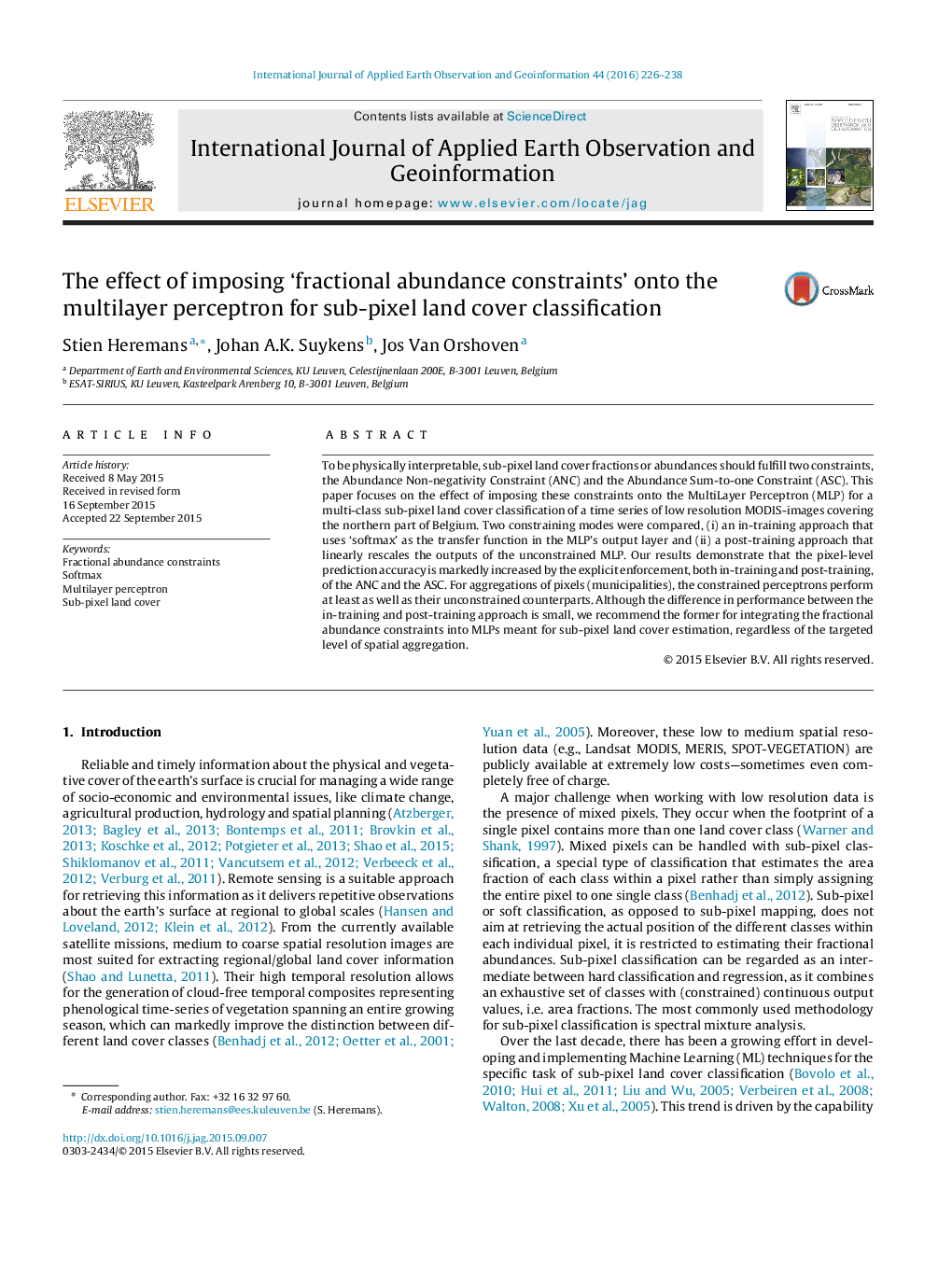| Article ID | Journal | Published Year | Pages | File Type |
|---|---|---|---|---|
| 6348556 | International Journal of Applied Earth Observation and Geoinformation | 2016 | 13 Pages |
Abstract
To be physically interpretable, sub-pixel land cover fractions or abundances should fulfill two constraints, the Abundance Non-negativity Constraint (ANC) and the Abundance Sum-to-one Constraint (ASC). This paper focuses on the effect of imposing these constraints onto the MultiLayer Perceptron (MLP) for a multi-class sub-pixel land cover classification of a time series of low resolution MODIS-images covering the northern part of Belgium. Two constraining modes were compared, (i) an in-training approach that uses 'softmax' as the transfer function in the MLP's output layer and (ii) a post-training approach that linearly rescales the outputs of the unconstrained MLP. Our results demonstrate that the pixel-level prediction accuracy is markedly increased by the explicit enforcement, both in-training and post-training, of the ANC and the ASC. For aggregations of pixels (municipalities), the constrained perceptrons perform at least as well as their unconstrained counterparts. Although the difference in performance between the in-training and post-training approach is small, we recommend the former for integrating the fractional abundance constraints into MLPs meant for sub-pixel land cover estimation, regardless of the targeted level of spatial aggregation.
Keywords
Related Topics
Physical Sciences and Engineering
Earth and Planetary Sciences
Computers in Earth Sciences
Authors
Stien Heremans, Johan A.K. Suykens, Jos Van Orshoven,
